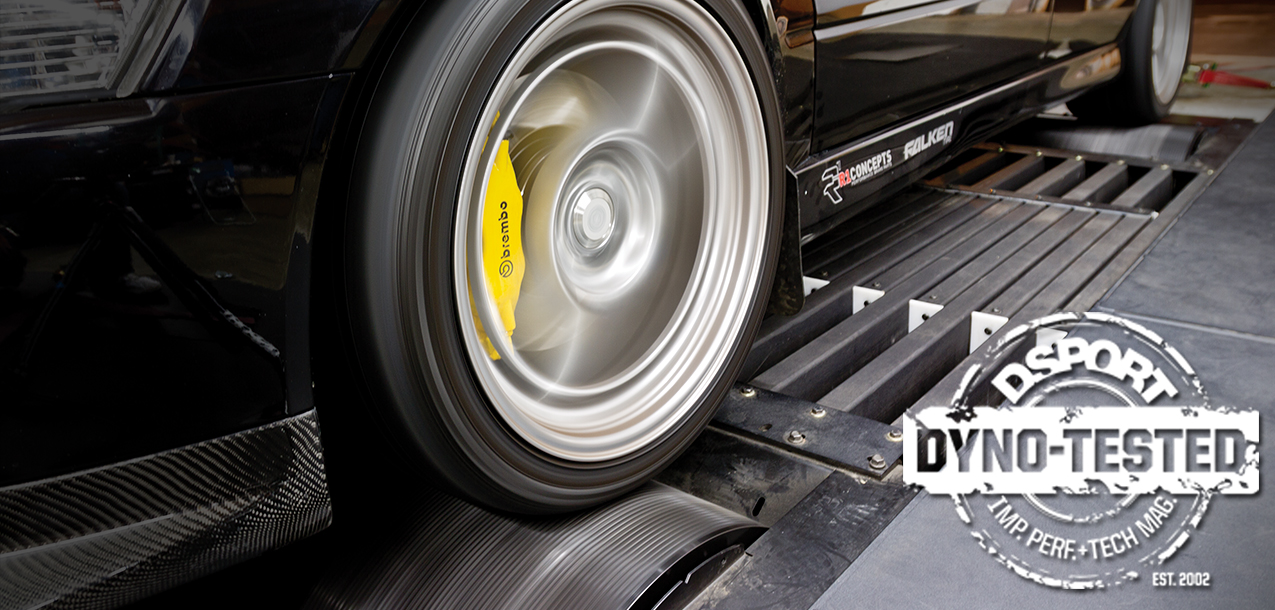Is the Percent of Power Gained Going to Be the Same From Dyno to Dyno?
NO
While some dynos showed comparable gains at specific RPMs, other engine speeds showed much different gains. Since different dynos have varying algorithms on how the load is applied, the boost curve is affected. Hence the most difference in percent of power gains is found in the RPM range that has boost transitioning to its steady-state level.
Test Procedure
We conducted our dynamometer test utilizing the exact same procedure at each facility in order to ensure consistency and a fair evaluation. All testing was done with the hood down and a 15-minute cool down with fans on was performed between runs. Each test platform made three pulls at both low boost and high boost. From these dyno pulls, we compiled the data for analysis.
Consistency
Since the Dynojet was the first chassis dynamometer embraced by the industry, we used it as the reference to compare against. All five dynos tested delivered repeatable results. As we mentioned before, repeatability is the most important measure of a dyno’s performance. In comparing the standard deviation across three runs, the variance ranged from fractions of a horsepower to several horsepower. Some dynos registered a spike or dip on one of the thee runs. This broadened the standard deviation figures for that particular dyno despite other pulls being within a percent or two of each other. Overall, repeatability to within two percent on average was a variance that the test dynos delivered on.
Garnering Gains
Once the boost was turned up, power increased. We compared the percentage gained on the Dynojet to the other four dynamometers. The results were similar in some RPM ranges, but not in others. For example, the Supra on the Dynapack was within a percent of the gains noted on the Dynojet up to 5,000 RPM. At higher RPMs, the reading for power gains differed by up to 11.8 percent. Similarly, the Mustang and Superflow were anywhere from one to 15 percent different at any given RPM range. Interestingly, the Rototest was within 1.5 percent of the Dynojet across the entire RPM range with exception of a 10 percent difference at 5,000 RPM and 30 percent difference at 5,500 RPM.
With the EVO, the results were a bit different, as variances on both hub dynos seemed to span a much larger range of percentage. The Mustang varied by under 5.0 percent across the RPM range except at 4,500 RPM when it differed by 9.5 percent. The closest to the Dynojet in the AWD evaluation happened to be Superflow, with variances under 2.0 percent across the board except for a 9.45 percent change occurring at 4,500 RPM.
Accuracy – A Different Argument
The argument that continues to rage comes down to horsepower figures. As everyone seems to compare themselves to Dynojet numbers, we decided to do the same. The hub dynos seemed to read “lower” than the Dynojet, along with the Superflow. The Mustang read lower than a Dynojet on the Supra, yet higher than the Dynojet with the EVO.
What’s Your Number?
While dyno figures provide a great point of reference, trying to compare the figures from one dyno to another is futile. If you want to truly know who has a more powerful ride, show up to the same dyno on the same day and have a shootout.
Dyno Tech Guide Part One: Choosing the Right Dyno
Dyno Tech Guide Part Two: The Test Cars
-1997 Toyota Supra
-2006 Mitsubishi EVO IX
Dyno Tech Guide Part Three: The Verdict + Dyno Showcase
-Dynojet 424xLC2
-Dynapack DP6000
-Mustang MD-AWD-500
-Rototest HUBDYNO® 1005
-Superflow AutoDynTM 30 AWD


